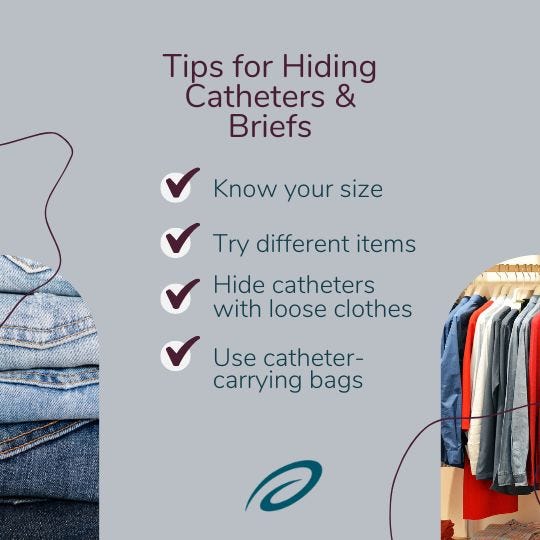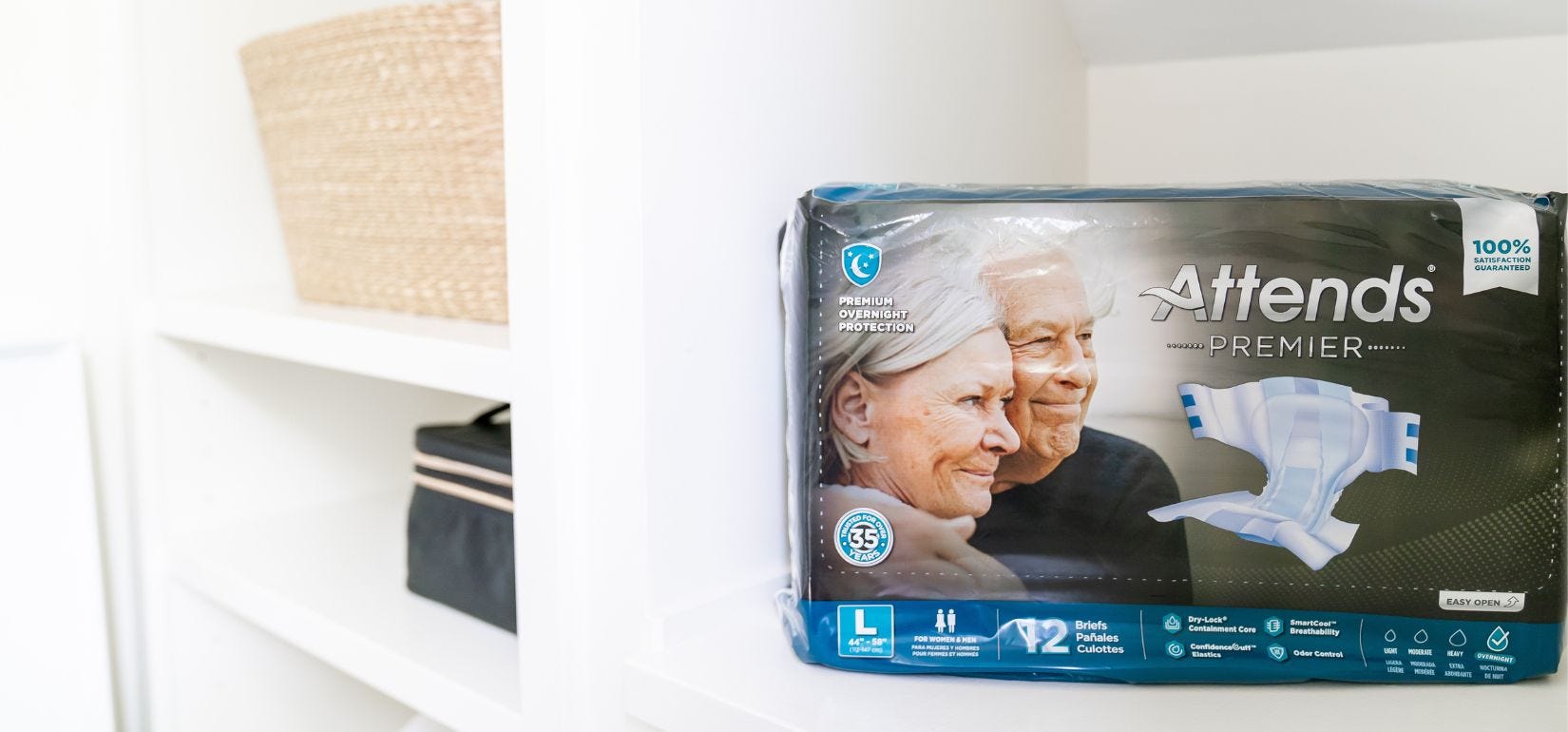When an individual is diagnosed with incontinence, they can often feel the weight that comes with having to adapt their lifestyle to the daily use of disposable briefs, catheters, and other continence care products.
Part of this weight is a never ending stream of thoughts about concealing their products in their clothing. Will their catheter be obvious? Will their briefs, also referred to as adult diapers, be noisy? Once they void their bladder, will it cause their protective undergarments to sag?
Don’t fret - some of this stress can be alleviated by making simple changes to your wardrobe.
Hiding Protective Underwear & Briefs
No matter which continence care supplies you need, there are ways you can conceal them. There is a chance that you already know someone who hides their continence care products, and you don’t even know it! All it takes is a little extra effort.
Size Matters
The first step in concealing your briefs, commonly referred to as diapers, or pull-ons is making sure that you have the correct size.
Check Your Eligibility
2 Easy Steps
From catheters to pediatric and adult incontinence supplies, discover the continence care essentials covered by your insurance.
Your brief or pull-on should fit snugly around your waist without leaving any gaps around your legs. Your supplies shouldn’t be too tight, pinch your skin, or cause discomfort. Many products are flexible and will allow you to comfortably remain active while staying protected.
Your height, the width of your hips, and weight should be taken into consideration for finding the right fit. It is important to adjust your size if you lose or gain weight in order to maintain a proper fit at all times.
Planning the Right Outfits
Wearing briefs (diapers) or pull-ons doesn’t mean you have to give up your jeans!
It may take some trial and error to find the right jeans for your particular product, but it is possible. We recommend looking for high-waisted jeans or trying a pair that is one size up from your usual size. Depending on the product you use, skinny jeans or a pair that is too tight around your hips may not be the best option for hiding your products.
A big perk of wearing jeans is that they are great for muffling any noise that can sometimes accompany briefs and pull-ons.
Of course, jeans are only one of many options. Skirts, dresses, leggings, pants, joggers, and sweatpants are other great options. Flowy skirts and dresses, as well as sweatpants, are great when a looser fit is desired. Wearing men’s standard briefs or tights over your undergarments (and under skirts or pants) can help lessen the noise of your products, as well. Tights can also prevent sagging, which can be especially beneficial for individuals that use adult briefs. However, it is important to ensure that the tights are not too tight because they can potentially alter your undergarment’s structure and lead to unwanted leakage.
If you’re concerned about hiding your products while wearing tight pants such as leggings, there are easy adjustments you can make to stay comfortable. Wearing a longer shirt or tunic can provide more coverage. You can also try tying a flannel shirt or a light sweatshirt around your waist as another stylish way to help you feel more comfortable. Long cardigan sweaters and coats are a great option for colder months, as well.
Hiding Catheters
If you aren’t using an intermittent catheter, you may be concerned about keeping your drainage bag out of sight. Depending on your personal preference, you can use belly bags or leg bags. Belly bags attach to your waist, while leg bags can be strategically placed on your thigh.
Whichever bag type you prefer, wearing loose-fitting clothing is a great option for individuals who use catheters. However, this doesn’t mean you have to be limited in your fashion choices. We recommend trying jeans or pants that are one size up from your normal size to ensure that the pants don’t pull on your catheter tubing.
Skirts, dresses, leggings, slacks, and tights are also great options for concealing drainage bags whether on the leg or the belly. High-waisted leggings and jeans can be a great way to secure a belly bag. Overalls are also an excellent option for belly bags as the thicker fabric can hold the belly bag securely in place while also providing a subtle layer of protection.
There are also a variety of adaptive garments for catheter users, including pants that zip up on the side.
Disposing of Products
When going about your day, it is inevitable that you will void your bladder at least once. It is best to be prepared with enough incontinence supplies to make it through your activities with ease.
Carrying extra diapers, pull-ons, or catheter supplies in a purse, backpack, or briefcase is a great way to subtly stay prepared at all times. It is also great to have a few plastic bags to place wet or soiled items in if you don’t have direct access to a trash can.
Keeping an extra pair of underwear or pants in your bag is beneficial, as well. The more prepared you are, the less stress you will have!
If you would like a more discreet option than carrying a large bag, there are special bags, purses, and carrying cases that can conceal intermittent catheter insertion kits or briefs and pull-ons.
Whichever of the above options is best for you and your needs, being comfortable is the most important factor. We recognize that adjusting to a life change such as incontinence can be scary and stressful, but one thing that you shouldn’t have to worry about is picking the perfect outfit to compliment your supplies.
Free Continence Care Supplies
Going to your local department store for incontinence supplies can be embarrassing to some individuals.
Did you know that you can qualify to have monthly supplies shipped in brown, discreet packages directly to your home?
Take the stress out of purchasing continence care supplies by filling out our quick and easy qualification form to see if you qualify to get continence care supplies through your insurance.
Information provided on the Aeroflow Urology blog is not intended as a substitute to medical advice or care. Aeroflow recommends consulting your healthcare provider if you are experiencing medical issues relating to incontinence.








